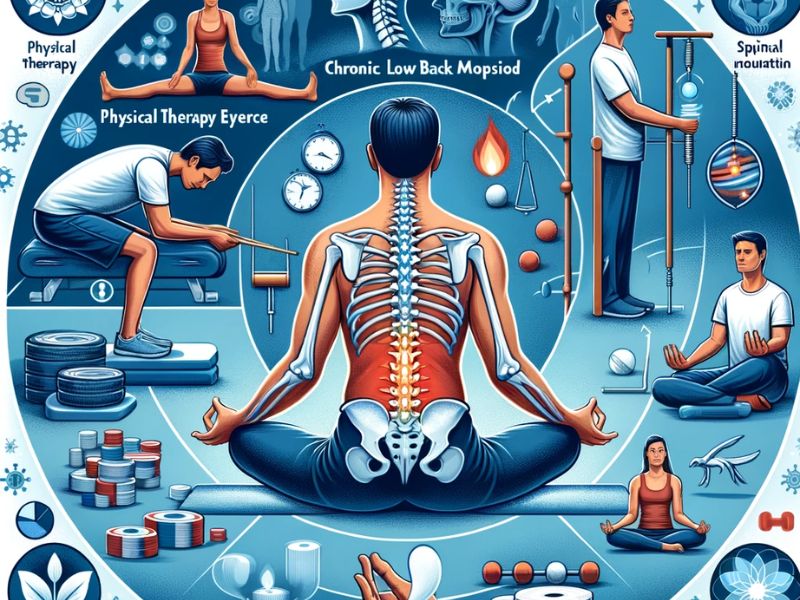
New Frontiers in Managing Chronic Back Pain
From identifying new cells to WHO guidelines, a new approach to treatment
WHO’s New Guideline for Chronic Back Pain
The World Health Organization has recently published its first guideline for managing chronic back pain. This guideline recommends treatments such as physical exercise, physical therapy, chiropractic care, and non-steroidal anti-inflammatory drugs (NSAIDs). Defined as pain that persists for more than three months and not attributable to specific structural spinal problems or diseases like arthritis, chronic back pain is the leading cause of disability worldwide, affecting about 619 million people. The WHO guideline focuses on a more holistic approach to back pain, utilizing therapies that are accessible and affordable for more people.
Revolutionary Discovery: New Cells Behind Back Pain
A recent scientific breakthrough has identified a new subset of cells within the degraded jelly-like intervertebral disks in people with painful back pain. These cells were absent in those who had either healthy intervertebral disks or degraded disks but no pain. The research, conducted by scientists at Cedars-Sinai, could lead to new treatment options for about 40% of the adult population that develops back pain due to degenerating disks. Treatments might include reprogramming the pain-linked cells or repopulating the disks with healthy cells to counteract the problematic ones.
WHO’s Recommendations for Treating Chronic Back Pain
The WHO recommends that adults with chronic back pain start with treatments that are the least invasive and potentially harmful. The values and preferences of patients should also be considered, as they are more likely to adhere to therapies they find beneficial. Among the recommended treatments are patient education and counseling, physical exercise or therapy, acupuncture or dry needling, spinal manipulation (chiropractic care), massage, cognitive behavioral therapy or mindfulness, NSAIDs, and topical cayenne pepper. The WHO guideline issues cautionary recommendations against the habitual use of various types of drugs in treating chronic back pain. This includes commonly prescribed medications such as antidepressants, anticonvulsants, muscle relaxants, glucocorticoids (commonly known as steroids), and injectable anesthetics like lidocaine or bupivacaine. According to the guideline, these drugs, though widely used in many high-income countries, should be used cautiously due to potential side effects and variable long-term effectiveness. WHO suggests opting for less invasive treatments with fewer risks of harm, favoring a holistic approach that can be accessible and affordable for more people.
The Future of Chronic Back Pain Treatment
The new discoveries and WHO guidelines pave the way for a future where the treatment of chronic back pain can be more personalized and less reliant on potentially harmful medications. The emphasis on a global approach and the importance of accessible and affordable treatments for all marks a significant shift in how this common and debilitating condition is addressed worldwide.
The Importance of Patient Education and Support
A key component of treating chronic back pain, as suggested by WHO, is patient education and support. This includes providing accurate information about potential treatments, helping patients set realistic expectations, and encouraging self-management approaches. Patient education can help reduce fear and anxiety related to pain, thereby improving treatment outcomes. Additionally, counseling can help patients develop strategies to manage pain and improve their quality of life.
Physical Exercise as a Key Treatment
Physical exercise is one of the treatments recommended by WHO for chronic back pain. Targeted exercises can strengthen the muscles supporting the spine, improve flexibility, and reduce tension. Regular exercise not only helps manage pain but can also prevent future recurrences. The key is choosing an exercise program that is suitable for individual needs and sustainable over the long term.
Towards More Effective Management of Chronic Back Pain
With the publication of WHO’s new guideline and advances in scientific research, a new era in managing chronic back pain is opening. These developments represent a significant step towards more effective treatment and less reliance on pharmacological interventions. It is essential that healthcare professionals, patients, and health policy makers adopt these new approaches to improve the care of millions of people worldwide affected by this debilitating condition.



